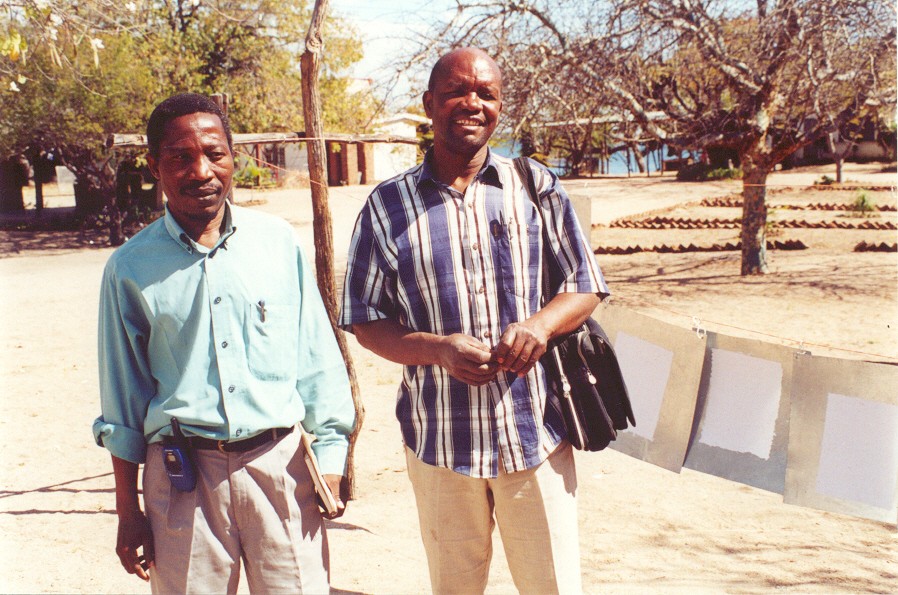
LEARNING BRIQUETTE MAKING
Lake Malawi is the third largest lake in Africa, covering a fifth of this country. It forms a part of the Western Rift Valley and is famous for containing greater numbers of fish species, 500 to 1000 of them, than any other lake in the world. At the southern end of this 600 kmís long lake, at the top of Nankumba Peninsula sits the headland of Cape Maclear, and Malawiís biggest fishing village Chembe has spread along itís beach. Surrounded and being part of the Lake Malawi National Park, Chembe was an obvious choice for the Finnish section of World Wildlife Fund (WWF) to start a project that would conserve this precious area from deforestation. According to the study done in 2001, 3-5 tons of firewood is used in this area daily. A sustainable alternative of fuel briquettes, made from organic waste material was needed and today 6 briquette making centres have been established in Chembe.
At the end of July, I was privileged to visit this project and the traditional village of Chembe with my colleague Stonard Malisale from COPRED.
Alison Wiklund from the University of Maryland Centre for Environmental Science is the co-ordinator of the project and despite having several projects to run (hand made paper is also made by WWF) and duties to perform, she very kindly gave us background information and insight to the projects as well as answering my abundant questions.
The briquette project has two Project Managers in Chembe, Joseph Mponda and Willie Msusa. Joseph Mponda is an artist and while he was concentrating on his beautiful fish drawings, Willie was guiding us around the briquette making centres.

We saw how cornstalks, grass, leaves or almost any other organic waste material was first soaked in a cement pit, and then let to soften into a pulpy mass in another pit Ė process called retting Ė before being pounded with a pestle in a traditional African wooden mortar. This whole process would take from one week to 3 weeks, depending how carefully the retting pits were looked after. It was important to keep them moist, well mixed and covered by plastic lined wooden lids.
This pulpy mass was then compressed into a briquette by a simple metal cylindrical mould lever press. As Chembe is a fishing village, there was no shortage for wire or cane racks used for drying fish. After basting in the sun for 2 -7 days the briquettes were dry, removed from the racks and ready for cooking beans or nsima.
For burning the briquettes, simple cement stoves were being made daily by Arnold.
These portable stoves are tailor made for 2 briquettes to fit snugly inside them and this should be sufficient for cooking a meal. A survey has revealed that an average family would use approximately 12 briquettes a day.
The production of briquettes and stoves create a small-business opportunity, thus generating much needed income. Briquettes were sold for 3 kw and stoves for 50 kw each.
The technique of briquette making is easy enough for anybody to learn, what is needed now is convincing the people of Kapeni and Nsomba that this alternative to burning wood is possible. I wonder what a study would reveal in this area, but knowing that 1000ís of hectares of forest in Malawi are lost every year just for making charcoal, it is not difficult to guess that problem here is as acute - if not even more so - as in the rest of the country.
My dream is that the beautiful scenery of Mount Soche and itís surroundings could be preserved, long walks and heavy weights for women and children carrying the firewood would be replaced by environmentally friendly alternatives and thus, a better world created for all of us.